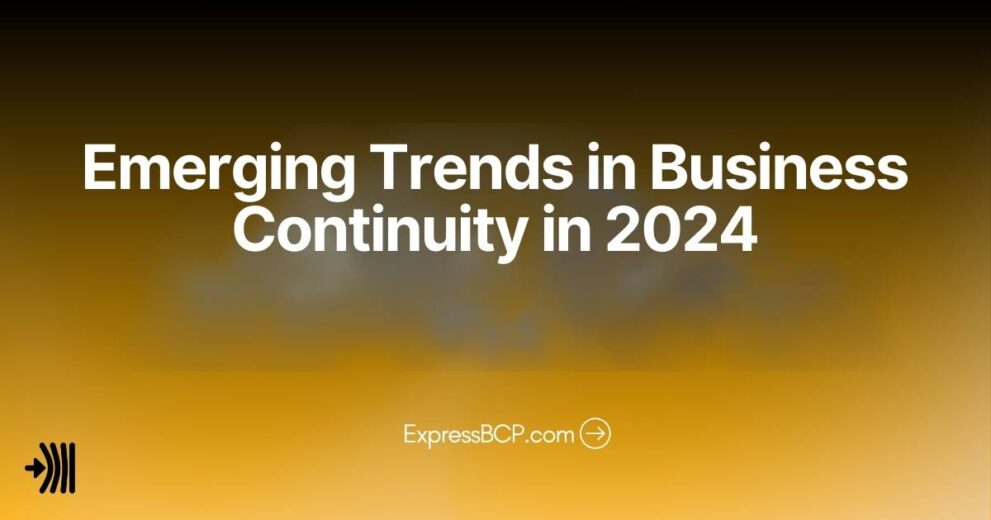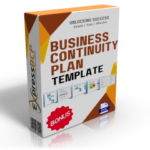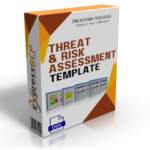In 2024, business continuity is no longer just a “nice-to-have.” It’s a necessity. According to recent studies, over 70% of businesses that experience a significant disruption without a continuity plan fail within three years. That’s a staggering figure! And it makes one thing clear: planning for the unexpected isn’t just about survival—it’s about thriving in uncertainty. In this article we will take a deep dive on today’s challenges and emerging trends in Business Continuity in 2024
As the world becomes more unpredictable, organizations are rethinking their approach to resilience. But it’s not all bad news. The landscape is changing fast, and with change comes opportunity. Today, business continuity leaders are harnessing new technologies, adapting to global threats, and shifting their strategies to stay ahead. Let’s dive into the top trends shaping business continuity, and business continuity plans, this year and how you can use them to strengthen your resilience strategy.
1. AI-Powered Risk Monitoring
Artificial Intelligence (AI) has been a game-changer for risk management. Real-time data feeds, predictive analytics, and machine learning models can now predict potential threats faster than ever before. This trend is particularly important as companies face complex risks like cyberattacks, natural disasters, and geopolitical instability. AI tools can track social media, news outlets, and even weather reports to give early warnings.
Actionable Tip: Invest in AI-driven risk monitoring platforms that integrate with your business continuity plans. These platforms help detect threats early, giving you more time to respond.
2. Resilience as a Culture
Creating a resilient organization isn’t just about systems and processes—it’s about people. In 2024, resilience is shifting from being a top-down initiative to a company-wide mindset. Teams across all departments are being trained to think critically about continuity, crisis management, and disaster recovery. The result? A more agile and prepared workforce.
Actionable Tip: Promote resilience across your organization by embedding it into your company culture. Train employees on the importance of continuity planning and run regular crisis simulations that involve all levels of the business, not just senior leadership.
3. Supply Chain Visibility and Diversification
Supply chains have been under immense pressure over the last few years, and disruptions show no signs of slowing down. In response, businesses are prioritizing end-to-end visibility, tracking every link in their supply chain. And they’re diversifying their suppliers to reduce the risk of a single point of failure.
Actionable Tip: Use supply chain management software to increase visibility across your operations. Work with alternative suppliers in different regions to build redundancy into your supply chain.
4. Cyber Resilience
With a record number of cyberattacks last year, 2024 has seen an increase in businesses focusing on cyber resilience. Continuity planning now goes hand in hand with cybersecurity strategies, recognizing that a strong defense is key to maintaining operations during a breach. The shift towards hybrid workforces has made this even more critical as companies are exposed to more vulnerabilities.
Actionable Tip: Integrate cyber resilience into your business continuity plan. Ensure regular penetration testing and have a clear plan for how to continue operations in the event of a cyberattack.
5. Remote Work Continuity
Remote and hybrid work is here to stay. But that means continuity planning has to evolve to account for a dispersed workforce. Organizations are ensuring employees have the necessary tools and systems. They also need reliable communication channels to maintain productivity during a crisis, no matter where they are.
Actionable Tip: Audit your remote work infrastructure. Ensure your employees can securely access critical systems from home. Conduct work-from-home drills as part of your continuity exercises.
6. Regulatory Compliance and ESG Integration
More businesses are integrating Environmental, Social, and Governance (ESG) considerations into their continuity plans. Not only are regulators demanding higher compliance standards, but stakeholders are also expecting companies to be responsible corporate citizens. This trend is pushing organizations to adopt more sustainable practices in their continuity strategies.
Actionable Tip: Review your business continuity plan to ensure it aligns with new regulations and ESG expectations. Build in contingencies for environmental risks and consider how social factors, like workforce well-being, impact your resilience.
7. Crisis Communications 2.0
Traditional crisis communication methods are being overhauled. Instant, transparent communication has become the gold standard. In a crisis, speed and clarity matter more than ever before. With social media amplifying crises in real-time, businesses must respond faster and more effectively.
Actionable Tip: Ensure your crisis communication plan includes rapid response protocols for social media and internal communications. Use pre-approved messaging and have dedicated spokespeople trained for high-pressure situations.
8. Scenario-Based Training and Testing
Testing is no longer a one-size-fits-all process. Scenario-based training is gaining traction, where specific risks are identified, and continuity plans are put through real-world simulations. The idea is to make testing more dynamic and reflective of the challenges businesses could face.
Actionable Tip: Move away from generic continuity tests. Create tailored scenarios based on actual risks your organization might face. Consider threats ranging from cyberattacks to natural disasters. Test your responses under pressure.
Final Thoughts
2024 is all about staying nimble. The pace of change isn’t slowing down, but by embracing these trends, you can turn challenges into opportunities. Whether it’s integrating AI, rethinking supply chains, or ensuring your team is crisis-ready, business continuity is no longer a static plan—it’s a dynamic process that evolves as the world around us does. Let’s make sure your business is ready for whatever comes next.








One comment